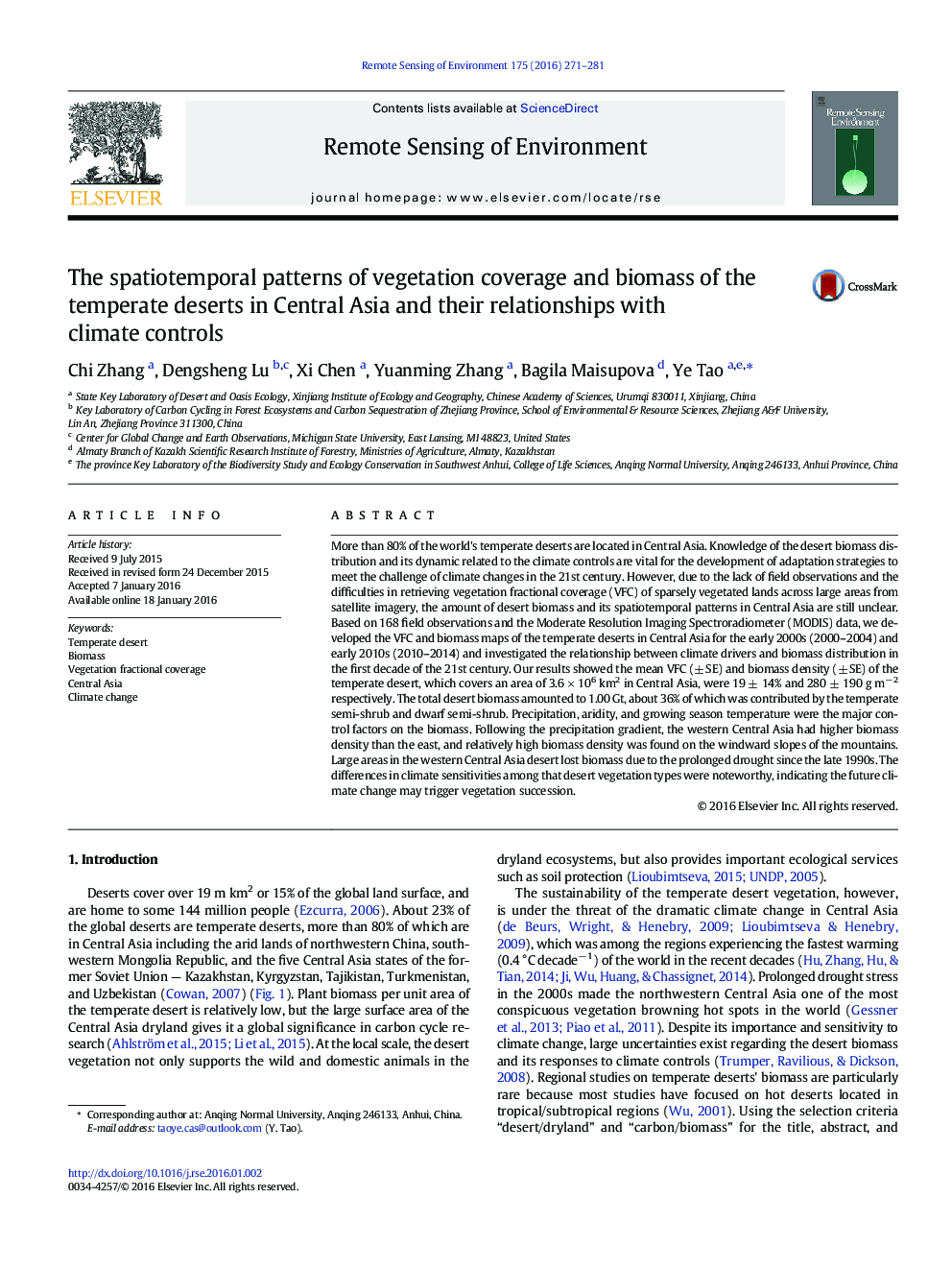| کد مقاله | کد نشریه | سال انتشار | مقاله انگلیسی | نسخه تمام متن |
|---|---|---|---|---|
| 6345630 | 1621225 | 2016 | 11 صفحه PDF | دانلود رایگان |
- We estimated the desert biomass in Central Asia with MODIS data & field observations.
- The desert's biomass amounted to 1 Gt, with a mean density of 280 ± 190 g m-2
- Following moisture gradient, biomass declined from the west to the east in the region
- The western Central Asia desert lost biomass in the 2000s, possibly due to a drought.
- Different vegetation types had very different biomasses & sensitivities to climate factors.
More than 80% of the world's temperate deserts are located in Central Asia. Knowledge of the desert biomass distribution and its dynamic related to the climate controls are vital for the development of adaptation strategies to meet the challenge of climate changes in the 21st century. However, due to the lack of field observations and the difficulties in retrieving vegetation fractional coverage (VFC) of sparsely vegetated lands across large areas from satellite imagery, the amount of desert biomass and its spatiotemporal patterns in Central Asia are still unclear. Based on 168 field observations and the Moderate Resolution Imaging Spectroradiometer (MODIS) data, we developed the VFC and biomass maps of the temperate deserts in Central Asia for the early 2000s (2000-2004) and early 2010s (2010-2014) and investigated the relationship between climate drivers and biomass distribution in the first decade of the 21st century. Our results showed the mean VFC (± SE) and biomass density (± SE) of the temperate desert, which covers an area of 3.6 Ã 106 km2 in Central Asia, were 19 ± 14% and 280 ± 190 g mâ 2 respectively. The total desert biomass amounted to 1.00 Gt, about 36% of which was contributed by the temperate semi-shrub and dwarf semi-shrub. Precipitation, aridity, and growing season temperature were the major control factors on the biomass. Following the precipitation gradient, the western Central Asia had higher biomass density than the east, and relatively high biomass density was found on the windward slopes of the mountains. Large areas in the western Central Asia desert lost biomass due to the prolonged drought since the late 1990s. The differences in climate sensitivities among that desert vegetation types were noteworthy, indicating the future climate change may trigger vegetation succession.
Journal: Remote Sensing of Environment - Volume 175, 15 March 2016, Pages 271-281
